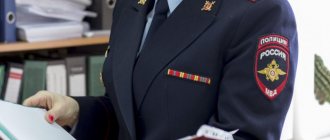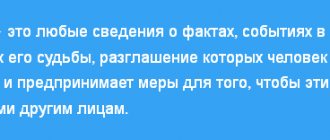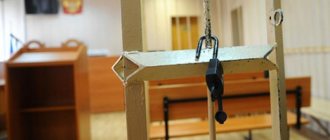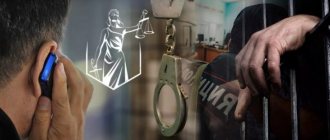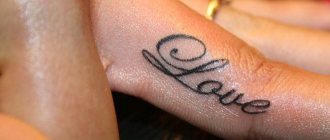What scammers can do with your passport and policy
Lawyer Antonov A.P.
A passport is our main document, which we cannot do without, for example, when buying a train or plane ticket, when transferring funds to a relative in another city, or obtaining a SIM card.
It is logical that the possibilities of fraudulent acts using passports are much wider than with any other documents.
Thus, having a photocopy of someone else’s passport, attackers can apply for a small loan from a microfinance organization - until now, many of these companies only need a copy of the document. Until the passport holder finds out about the loan, the amount will turn from small to significant: usually collectors begin to demand repayment of the debt after two to three months of delay. During this time, taking into account interest (from 2% per day plus penalties), the amount will increase significantly.
Having taken possession of someone else's passport data, fraudsters can register a company that will engage in illegal activities. Without knowing it, the unfortunate owner of the passport can “occupy the post of general director,” but only until the criminal company is discovered by law enforcement officers. And if a citizen cannot prove his innocence, he will be held accountable.
A compulsory medical insurance policy is a document confirming the conclusion of an agreement on compulsory health insurance of citizens.
Most often, compulsory medical insurance data becomes available to the medical community - doctors, nurses, etc. A compulsory medical insurance fraud scheme may look like this.
For example, you have a headache, as a result of which you are forced to seek qualified medical care from a local therapist. You make an appointment and successfully complete the course of outpatient treatment. Six months later, you again need to see a doctor, you decide to make an appointment using the electronic portal, and you see that in six months you have been to ten specialists for treatment, whom you actually did not see.
Here is a typical scheme for a medical institution to steal funds from your insurance company. You need to understand that insurance organizations transfer funds to the account of the hospital or clinic for each patient who applies. The more complaints and requests, the greater the amount of deductions. If in Gogol's times dead souls were used, now they do not disdain absolutely healthy and alive ones. If this fact is revealed, you should submit a corresponding statement to law enforcement agencies, who may decide to initiate a criminal case.
Sincerely, lawyer Anatoly Antonov, managing partner of the law firm Antonov and Partners.
Still have questions for your lawyer?
Ask them right now here, or call us by phone in Moscow +7 (499) 288-34-32 or in Samara +7 (846) 212-99-71 (24 hours a day), or come to our office for a consultation (by pre-registration)!
What is the danger of a photocopy of your passport in the wrong hands? Three reasons to lock her in a safe forever
Using a photo or photocopy of your passport, scammers can apply for a loan on you, sell your apartment, or secure a criminal case. Medialeaks figured out how your personal data ends up in the wrong hands, why you can’t send scans of your documents to strangers, and whether you can protect yourself from deception.
A story about fraudulent ways to get your passport data was shared by a Pikabu user under the nickname mr.p5ycho. A man saw his friend's wife trying to send a photo of her passport to an employer she met on social networks. According to him, the woman was going to get a job as a courier, and her interlocutor asked to send photographs of her documents without meeting her in person. The pikabushnik stopped the woman, telling her simple ways of how to get a loan for a person using two photos - a passport and a person with it. We will talk about them below.
Photos of your passport can get to scammers not only through correspondence on VK. Do you remember how many organizations you shared copies of the document with? These include the personnel departments of all companies where you worked, mobile operators, notaries, government and commercial institutions (from schools to housing departments) and many others.
If the organization was a fictitious company of criminals or a fraudster appeared among its employees, your financial security will be at risk.
The first danger. Didn't take out a loan? Now take it
mr.p5ycho noted that attackers only need a photo of your passport to issue a microloan or credit for you. Russian blogger and investment consultant Rami Zaitsman agrees with the user.
Today, there are at least five services that provide the opportunity to get a loan online, without official employment, with a bad credit history and without visiting an office. The borrower needs to send a passport photo. To do this, you need a color copy and a phone to take a photo.
In his post, mr.p5ycho provided a plan that attackers use to take out a microloan for a stranger. Violators need very little to implement it.
1. Left SIM card (buying it online is not a problem). 2. Left phone-flashlight. 3. Left laptop. 4. Left Internet. 5. Left account in VK.
As a rule, scammers look for victims on social networks: they create a fake account and, on behalf of an allegedly real user, publish advertisements in thematic job search groups. Applicants are offered remote work, for example, a courier position.
When a user responds to a vacancy, scammers ask him to send a photo of his passport and actual residence address. In this case, the interlocutors demand that you place the document with the person during the shooting, explaining that this is necessary to confirm your identity.
Next, the scammers begin to use the victim’s data.
At the same moment, they register a Qiwi wallet for the left SIM card, enter the victim’s data and send the same photos with the passport for verification. Now they have two options: order a plastic card or use a virtual one.
Fraudsters need a cash account in order to receive a loan from a microfinance organization (MFO) using your passport data. All transactions are carried out online, but the company will not send money if the name of the card owner does not match the name of the borrower.
The easiest way is to create a virtual wallet and cash out through a Bitcoin exchanger, explains mr.p5ycho. However, scammers can also issue a real plastic card.
They order a plastic card in the name and address of the victim. As soon as the plastic card arrives, the victim writes back to them, saying that a letter has arrived. They give her 100-200 rubles for travel and tell her to take the parcel to the left mailbox. After completing the task, they pay the courier for the work so as not to arouse suspicion. And then they take an envelope with a plastic card from the mailbox.
After executing the plan, the attackers have a lot of time to escape. A deceived person finds out about the fraud only when he receives a call from a microfinance organization or the police and demands to repay the debt.
A list of organizations ready to issue a loan online is available on the Internet at the request “take out a loan without a passport.” The first company offers to remotely transfer the required amount to your card, Qiwi wallet, or give it in cash. The instructions for applying for a loan note that in order to receive money you need to upload a photo of your passport.
The second danger. From now on you are the boss of the company
In addition to the borrower or loan guarantor, you risk becoming the owner of the company. To pull off such a scam, attackers will need an accomplice in the Federal Tax Service or another influential assistant. Nevertheless, cases of organizations being registered in the name of victims of fraud are not uncommon.
With the help of a company registered in your name, violators can hide from paying taxes and cash out their money. As the founder of the organization, you are responsible for all property, and as a legal entity, you bear administrative and criminal responsibility for its activities. At the same time, it can be very difficult to catch scammers and prove that you are right. Federal Tax Service employees also talk about this.
If there is unauthorized use of your documents by unknown persons, you must contact law enforcement agencies. An organization can be liquidated by decision of the founders or by a court decision. This process is difficult and lengthy. Moreover, in the event of liquidation of an organization in court, the obligation to liquidate the legal entity, including property liability, is assigned by the court to the founders. The easiest and most reliable way to protect yourself from trouble is to be careful about your identity documents.
The third danger. Becoming homeless is easier than you think
Once they receive a copy of your passport, fraudsters can create a fake document and use it to perform many transactions. Perhaps the biggest one among them is the sale of your apartment.
In 2022, a similar story happened to Moscow resident Dmitry Pchelin. As Moscow 24 reports, the man was renting out an apartment and, when concluding a lease agreement, gave a copy of his passport to the tenant. Within a few months, the guy forged the owner’s passport, and then issued a power of attorney for all real estate transactions with a notary.
With the help of a power of attorney, the fraudster received copies of documents on ownership of the apartment and quickly sold it at a reduced price. Whether Pchelin managed to return his property remains unknown.
Which copy is too tough for scammers?
There are several recommendations that will help you protect your personal data from fraudsters. First, when sending copies of your documents to companies, process the pictures in Photoshop. Place a watermark on the scan and indicate which organization the photo is intended for.
Secondly, you should monitor your credit history. To do this, you need to contact the Central Catalog of Credit Histories of the Central Bank of the Russian Federation and get a list of organizations that issued loans in your name. This can be done for a fee - for example, for 300 rubles on the website banki.ru.
Thirdly, in order to prevent fraudsters from registering real estate in your name, you can contact Rosreestr and establish a ban on transactions with apartments without your personal presence.
When controlling who your personal data goes to, don't overdo it. Remember that you will eventually need photocopies of your passport for many documents, from car insurance to work passes. Paranoia and caution are not the same thing, but vigilance is never too much.
How to secure electronic signature
Neither 63-FZ nor other regulations provide a direct answer to the dangers of an electronic signature, but like any document (digital instrument), an electronic signature has a high probability of being used illegally. If you have never issued an electronic signature and do not know whether it was done for you, check the current electronic signatures on the State Services portal. Go to your personal account, and then to your profile - to the “Electronic Signatures” section. If there are no issued digital signatures, then there is nothing to worry about.
From practice, it is clear why an electronic signature is dangerous for individuals - because it is used without the knowledge of the owner to sign papers, conduct transactions and register legal entities for illegal enrichment . If you are registered on public platforms (State Services, the official website of the Federal Tax Service), periodically check the section with valid digital signatures. For example, on State Services you can check the latest actions; information about filing applications, registering a company or individual entrepreneur is displayed there. And on the Federal Tax Service website, in the taxpayer’s personal account, check whether someone has sent a report or application to the Federal Tax Service Inspectorate for deductions instead of you.
Here's how to secure an electronic signature for an individual :
- Set up notifications in government resources for logging into the system via electronic signature. Notifications come via SMS and email.
- Do not transfer the electronic signature to other people (including employees); limit access to the private part of the key to third parties.
- Additionally, protect your PC with an electronic signature with a password and antivirus. Be sure to set a password on the token or other key information carrier with digital signature. Lock your computer or laptop when you leave your workplace.
- Do not transfer copies and scans of personal documents to unknown and unverified counterparties, do not leave information on suspicious sites.
- Revoke the digital signature of the dismissed employee if you provided him with a certificate from the organization.
Is it possible to fake an electronic signature?
An electronic signature is a secure carrier of key information on which the owner’s data is encrypted. Documents signed with qualified electronic signatures (CES) are recognized as fully legally significant and correspond to paper registers endorsed by an individual (Part 1 of Article 6 63-FZ of 04/06/2011).
This is the main risk of an electronic signature - the deliberate use of an electronic signature without the knowledge of the owner leads to illegal enrichment and other offenses.
In essence, the electronic signature corresponds in importance to the passport. The use of a digital signature confirms not only the identity of an individual, but also his consent to certain actions. If you signed a document or conducted a remote transaction with an electronic digital signature, these transactions are recognized as legally significant. And in fact, it doesn’t matter who performed them - the owner or another person: it is very difficult to prove in court the intentional use of an electronic digital signature by a third party .
Federal Law 63 stipulates that it is impossible to forge an electronic signature. The electronic signature is created using crypto technologies; it cannot be hacked or faked. EDS fraud involves something else—the theft of a key medium, guessing a PIN code for the private part of a digital signature.
Any electronic device consists of open and closed parts . The open part is the digital signature certificate: it is available for viewing by all recipients of the document. But only the owner knows the private part: it is stored on a key medium (token) or recorded on a PC. The closed part of the electronic signature is protected with a PIN code, which is what scammers are trying to find out.
Previously, in order to obtain fake electronic signatures, fraudsters falsified personal documents of an individual and transferred them to a certification center to obtain an electronic digital signature in the name of this person. But as of July 1, 2020, the rules have changed: in order to receive an electronic signature, the certificate holder must visit a certification center and confirm his identity .
The concept and types of document forgery.
There are two types of document forgery - complete and partial.
A complete forgery is the production of an entire document with all its details or its form, seal impressions, stamps, signatures in it.
Documents produced on blank sheets of paper (certificates, certificates, certificates) are most often subject to such forgery. Documents produced by printing are less likely to be completely forged.
Ways to completely fake it:
• production of the entire document or its form;
• entering deliberately false data into a document;
• forgery of the signature of the person certifying the document;
• counterfeiting of seals and stamps. A seal is a special cliche used in the preparation of documents for applying imprints that have a specific text depicting the State Emblem of the Russian Federation or a subject of the Russian Federation (stamp seals), an emblem or a symbol (simple seals). A stamp is a special cliche reproduced on documents and business papers to mark the official name of an organization.
Partial forgery is the introduction of changes to the content or individual details of an original document.
Methods of partial forgery of documents:
• erasure – mechanical removal of part of the text;
• etching and washing - removing text with chemical reagents and various solvents;
• addition – adding new words, phrases or individual characters to the document;
• replacing parts of a document - pasting individual sheets, re-gluing photographs, replacing sheets, etc.
Methods and signs of forging forms.
Ways to falsify document forms:
• drawing;
• production using homemade clichés;
• photo reproduction;
• production using duplicating equipment, using printing and computer equipment.
The main way to identify signs of falsification of a document form is to compare it with samples of genuine forms. In this case, attention is drawn to:
• accuracy of reproduction of watermark designs, protective mesh, emblems, typographic font signs;
• color of dyes;
• paper quality.
Methods and signs of counterfeiting seals and stamps.
Forgery of seal impressions and stamps, which are important details of a document, is carried out in various ways.
• drawing a seal on the document itself;
• copying a genuine print onto a fake document;
• obtaining an impression using a fake cliché (made by cutting, engraving, photomechanical method, using typographic fonts or other means);
• obtaining an impression using foreign objects that have an external resemblance to seals and stamps, but have a different purpose (badges, coins, etc.).
Signs of counterfeit seals and stamps include:
- non-standard font;
- different sizes and graphic designs of letters of the same name in words;
— discrepancy between the axes of the letters and the radius of the circle;
- uneven spacing between circle lines, words, emblems;
— lack of symmetry in the image of the print elements;
— broken line of lines;
- sinuous strokes of oval elements;
- grammatical errors;
- unequal axle tilt;
— discrepancy in size, shape, content, placement of text in the emitted print and samples;
— non-standard font, the presence of handwritten versions of characters, traces of writing instruments and preliminary preparation;
— pallor and blurriness of the strokes of the print;
- uneven lines of circles, inaccuracies in the designs of the coat of arms, angularity of ovals, mirror images of individual signs.
Signs of drawing the image of a print on a document are the presence of traces of preliminary preparation (remains of traces of carbon paper, pencil strokes, a puncture in the center of the print from a compass); uneven distribution of dye in the strokes of the print; different configurations of the same signs; unequal sizes of letters, spacing between them and between lines; breaks in strokes and their uneven width; distortion of the design of individual letters and their elements; doubleness of some strokes; non-radial placement of characters in the text made along the rim of a round seal.
When counterfeiting by copying an original print through carbon paper directly onto a document and then tracing the strokes, you can observe traces of the carbon paper dye.
When making a seal or stamp impression using a homemade cliche ,
made by engraving, etching, drawing on paper, cutting from dense materials (rubber, linoleum, wood, etc.), assembled from typographical letters, characteristic features remain that can be detected during inspection or special research. Such features include: non-standard font, unequal sizes of letters and spacing between them, lack of cut-offs in letters, the presence of mirror images of letters and signs, the presence of circles of annual rings in prints of wooden cliches, the presence of circular lines or parallel grooves from metal cliches, uneven distribution of dye in the print, tortuosity in the thickening of strokes, broken lines of lines and others.
The simplest is to draw an image of a print directly on a fake document. Currently used very rarely. A drawn “print” is established by the presence of a set of signs of preliminary preparation (pencil strokes, drawing of individual details of the image), the use of certain writing or drawing instruments (traces of pressure of a pencil, pen, drawing pen, compass, etc.), drawn font (unequal configuration of the same name letters, uneven sizes of characters, the distance between them, distortion of the design of individual letters and characters, etc.), features of the distribution of dye in strokes (depending on the writing or drawing instrument used).
Forgery of a print is also done using a hand-drawn paper cliché. First, a flat cliche is made by drawing in a mirror image. This cliche is used to make an imprint of the drawn image onto the desired area of the document using wet copying.
Such a print, in addition to the signs of a hand-drawn non-standard image, is characterized by uneven, weak coloring of strokes, and dye smudges in certain areas. The surface of the document paper at the location of the print, as a result of moisture during copying, will differ from the rest of the paper surface, including the nature of luminescence.
A computer with a scanner and a color laser printer reproduce the print in a color that matches the original. The electrographic method of obtaining an image distinguishes such a “print” from a seal impression applied with a rubber cliche. However, in this case, the document is fabricated by editing and looks like a photocopy of the latter, therefore, when examining such seal impressions, it is necessary to establish the fact of editing.
The seal itself is also counterfeited. Homemade methods for making a relief cliché by carving wood, linoleum, leather and other more or less elastic materials, as well as by engraving metal, typographical typesetting, etc. are increasingly giving way to skilled stamp production using modern computer technology.
It is very difficult to distinguish an imprint of a seal made using high technology from an imprint of a genuine one, but it is still possible. To do this, it is necessary to conduct a comparative study of the tested print with samples of genuine seal prints.
Identification of seals. When studying the seal impressions available in documents, it is often necessary to establish whether they are affixed with the seal of a given institution or a seal seized from a suspected person, or some other seal.
To conduct such a study, it is necessary to study and compare the seal impression available in the document under study with samples of prints left by the seal being tested. Samples of seal impressions for comparative research are selected in the form of free and experimental ones. Free samples are impressions of this seal applied to various documents before the initiation of the case, in a period close in time to that specified in the document under study. Experimental prints are applied with this seal in quantities of 10 -12 with varying degrees of pressure on the same paper as the document under study, as well as on thick white paper.
Identification of a seal by imprint or imprints is carried out through a comparative study, in which the coincidence or difference of general and particular characteristics is established. The general characteristics of a seal are its shape, size, content and placement of text, design of the coat of arms, emblems, size and design of the font. Some features associated with the manufacture and use of printing are considered private characteristics: the shape of small parts, the placement of individual elements relative to each other, the size of the angles at which strokes are connected, the width of strokes, curvature and deformation of individual letters and signs, etc.
AGB ~ Guarantee Agency
Methodology for checking a Russian passport - independently To the list of orders
Check your passport See also: Check your passport
First of all, it is necessary to conduct a check using the service provided by the Main Directorate for Migration Issues of the Russian Ministry of Internal Affairs.
But you need to understand that this is only the first step on a very difficult path. Of course, if you receive a response that the passport is “Not valid”, then this can be very useful for further assessing the situation. However, here too it is necessary to allow for base errors. Does this give the correct answer? Pay attention to the phrase located on the page of this service: “We are improving the service with the help of citizens. Information in AS “Russian Passport” has been corrected: 1993285 (as of September 3, 2020) This means that this is exactly the number of citizens who applied to correct errors in the database. However, it can be assumed that even more citizens simply have not yet encountered such an error in their data. At the same time, in three years there has been an increase of more than 2 times! So, on March 5, 2022, there was an entry “Adjusted information: 800772.”
But most often we receive the answer: “It is not among the invalid ones.” Does this answer indicate that a passport was issued? Probably, with common sense, we can only say that a passport with such a series and number is not included in the list of invalid ones! Thus, it would be too reckless to check someone using this database and calm down.
Threats
But how do you know if it was really issued? And to whom? Have you verified your full name, date and place of birth, and other data?
A passport itself is a fairly well-protected document from forgery, so passports are rarely forged “from scratch,” and attackers limit themselves to partially changing real passports.
METHODOLOGICAL RECOMMENDATIONS for identifying signs of falsification of a passport of a citizen of the Russian Federation
An analysis of expert practice shows that in recent years there has been an increase in counterfeit passports of citizens of the Russian Federation. As a rule, the third page of the passport with the owner’s photo card and installation data, as well as registration stamps, is subject to forgery.
Forgery of the third page of a passport is currently carried out in several ways.
- Peeling the laminate, replacing the existing photo card with a new photo card and re-laminating.
- Cutting out the photo card and gluing a new one with a new laminate in its place.
- Gluing onto the third page of the passport (on top of the laminate, photo card and installation data) a sheet of paper with simulated details, photo cards and lamination with a new laminate.
- Removing the laminate, photo card and the surface layer of paper with installation data, applying simulated images of the form, photo card, installation data to the paper and laminating with a new laminate.
- “Unstitching” the passport, removing the existing sheet and “sewing in” a new sheet with simulated details of the form, installation data, photo card and laminate.
Examination of the passport should be carried out in three stages: Check the passport
- Checking the validity of a document
- Establishing its ownership by the bearer
- Identifying signs of document forgery
At the first stage, the legal force of the document and the compliance of the passport form with the approved and valid form are established. Then all details (mandatory information contained in the document), the presence of seals and stamps, and their content are checked.
When logically studying the contents of a passport, it is necessary to pay attention to the correspondence of the date of birth with the dates of issue of the document and the issue of the sample passport. In fake documents, these dates may contradict each other. The date of issue of the passport must correspond to the age of its owner.
It is necessary to check the correspondence of the record about the region in which the passport was issued with the stamp of registration of the citizen at the place of residence at that time.
The approximate age of the person depicted on the photo card must correspond to that indicated in the document.
If there are any doubts about the authenticity of the document presented, it is advisable to compare the entries in the passport with the data in the birth certificate, military ID or other document.
At the second stage, the identity of the document is verified by the bearer by comparing the image on the photographic card with the citizen’s appearance. It is preferable to compare photographic cards, last name, first name, patronymic and other information in different documents.
At the third stage, a thorough examination of the passport is carried out in order to identify signs that could indicate its possible forgery.
Signs of currently occurring passport forgeries can be detected by examining the third page of the passport against the light, in oblique lighting, using magnifying devices (loupes, microscopes), as well as examining the document in ultraviolet light, to identify the security elements of the passport and the method of its manufacture, it seems It is advisable to use a portable autonomous device “Ultramag-AZb” (Russia). Initially, the method of producing the passport page is established (it must be produced by printing and have the necessary “set” of security elements), and then the document is studied in order to identify a possible replacement for the photo card.
Having analyzed all the currently encountered methods of falsifying a passport of a citizen of the Russian Federation, we have selected signs that can be identified when examining a passport in the departments of the passport and visa service, the presence of at least one of which may indicate either a complete or partial forgery of the third passport pages.
Thus, if the third page of a passport is falsified, the following signs may be detected:
- simulated images of the form details (inkjet printing - the images consist of individual dots of black, cyan, magenta and yellow, sometimes the dots can have the same color, the dots have approximately equal sizes; using color electrophotography - the coloring matter is on the surface of the paper, all images consist of small, sintered grains of coloring matter of black, blue, purple and yellow colors, the images have a granular structure and a specific shine, there are dots on unprinted areas);
- difference in color of the third page of the passport from other pages of the document;
- absence of watermarks (with complete replacement of the sheet);
- different size of the third page compared to other pages of the document;
- the absence on the page of the passport and on the photo card of the repeatedly repeated text “Ministry of Internal Affairs of Russia”, which fluoresces in red in ultraviolet rays;
- the absence of the word “RUSSIA” on the passport form, which fluoresces green in ultraviolet rays;
- the absence on the passport form of fibers that fluoresce in ultraviolet rays in yellow and green;
- lack of microtexts on the lines of the third page;
- different shades of the coloring matter of the numbers used to make
- series and document number on the third page and on other pages of the passport;
- in some cases, poor quality reproduction of the details of the third page form;
- the presence of “bumps” on the laminate, numerous folds, dullness of the laminate;
- presence of dirt, foreign fibers, etc. under the laminate;
- peeling of the laminate from the page;
- the presence of traces of a laminate cut at the top of the page; — presence of traces of a cut in the laminate around the photo card;
- the presence of another photo card under the photo;
- the presence of two laminates;
- difference in the shade of the coloring matter and the design of part of the ornament;
- available on the photo card, located on the form;
- folds on one of the endpapers and cover of the document.
Since 2006, a protective “diving” metallized thread has been introduced into the paper on the nineteenth and twentieth pages, changing color depending on the viewing angle; individual sections of the thread are visible on the surface of the nineteenth page.
As noted above, stamps indicating registration or deregistration are also subject to forgery.
The official seal of the authority that issued the documents can be falsified only if the attackers, for some reason, have a blank document form at their disposal.
Previously, impressions of identification printed forms (seals and stamps) were forged quite primitively and could be detected by a non-specialist.
However, at present, attackers use the same technologies to forge seals and stamps that are used in the production of genuine identification printed forms. For this reason, it is extremely difficult to identify such a fake without special knowledge and samples for comparison. In this regard, we will not dwell on this problem in detail in these methodological recommendations, but will indicate only the most characteristic signs of counterfeit printed identification forms that a passport and visa service employee can pay attention to:
- spelling and semantic errors;
- mirror image of the coat of arms;
- signs of inkjet printing and electrophotography (indicated above when
- passport description);
- simplified drawing of signs;
- different graphic designs and sizes of signs of the same name;
- absence of individual parts of signs;
- uneven placement of text, unequal distances between
- signs;
- angular structure of oval elements;
- rounding the ends of strokes and angular elements;
- displacement of signs;
- violation of parallelism and radiality of lines;
- fractures, tortuosity of strokes;
- uneven coloring of sign elements;
- continuous display of elements located close to each other;
- the presence of extraneous fragments of strokes and dots on whitespace elements;
- duality of sign elements.
In cases of any doubt about the authenticity of the passport and difficulties in assessing the identified signs, it is advisable to contact specialists of the forensic service of the internal affairs bodies or employees of the territorial divisions of the Federal Migration Service of Russia.
Check passport
What to do if your digital signature is stolen
If your electronic signature is stolen, follow the instructions:
1. Revoke the certificate from the CA. The same must be done immediately after the employee is dismissed.
The procedure is quite simple: you should write an application for revocation to the center where the electronic signature certificate was issued. If you did not issue an electronic signature, but found out that someone issued it for you, trace the digital path of the electronic signature - find the site where the certificate was used and see who issued it. Contact this certification center and revoke your digital signature.
In addition, ask the CA for copies of the documents used to draw up the electronic signature - they will be needed for the application to the police.
2. File a police report.
Indicate in it that the scammers used an electronic signature without my knowledge, provide all copies of supporting documents. If the police do not initiate a case, contact the prosecutor's office or the Ministry of Telecom and Mass Communications.
3. Go to court to annul the transaction.
If you used a stolen digital signature to perform legally significant actions (signed documents, an agreement, conducted a real estate transaction), submit an application to the judicial authority to invalidate the documents or transaction. By analogy, contact the Federal Tax Service if you filed an inaccurate declaration or other information on behalf of an organization, registered or liquidated the company.
To cancel a declaration, submit an application and an adjustment report . To invalidate registration actions, find out the address of the fictitious company from the extract from the Unified State Register of Legal Entities and send an application in any form .
How is the use of someone else's passport qualified?
Lawyer Antonov A.P.
As a rule, the theft or other illegal acquisition of someone else's passport or other personal document is carried out for a predetermined purpose. One of the most common is the use of a passport to illegally obtain a loan to another person in order to avoid repaying the debt. Explanations regarding this situation are provided in paragraph 13 of the Resolution of the Plenum of the Supreme Court of the Russian Federation “On some issues of judicial practice in cases of crimes provided for in Articles 324–327.1 of the Criminal Code of the Russian Federation”: commission of another crime by a person (for example, fraud, smuggling, illegal crossing of the State Border of the Russian Federation ) using a citizen’s passport, identity card or other official document that grants rights 5 or exempts one from duties, as well as stamps, seals or forms, forged by him, is qualified for a set of crimes provided for in the relevant article of the Special Part of the Criminal Code of the Russian Federation and Parts 1 and 2 Article 327 of the Criminal Code of the Russian Federation. At the same time, the actions of a person do not require an independent legal assessment under Part 3 or Part 5 of Article 327 of the Criminal Code of the Russian Federation in cases where he uses knowingly forged documents, stamps, seals or forms made by another person to commit a crime, and their use is covered by the method crime committed (in case of theft of funds by the borrower submitting a forged document to a bank or other creditor - Article 159.1 of the Criminal Code of the Russian Federation; theft of funds or other property when receiving benefits, compensation, subsidies and other payments by submitting a forged document to the relevant authorities making decisions about these payments, - Article 159.2 of the Criminal Code of the Russian Federation; illegal movement across the customs border of funds, monetary instruments, alcoholic beverages, tobacco products, committed using a forged document, seal - Articles 200.1, 200.2 of the Criminal Code of the Russian Federation; illegal crossing of the State Border of the Russian Federation with the presentation of a forged document - Article 322 of the Criminal Code of the Russian Federation; and etc.). At the same time, the acquisition, storage, transportation for the purpose of using for the commission of a crime of obviously counterfeit documents, stamps, seals or forms made by another person must be additionally qualified under Part 3 of Article 327 of the Criminal Code of the Russian Federation.
Still have questions for your lawyer?
Ask them right now here, or call us by phone in Moscow +7 (499) 288-34-32 or in Samara +7 (846) 212-99-71 (24 hours a day), or come to our office for a consultation (by pre-registration)!
Cases of fraud with digital signature
There are many possible cases of fraud with electronic signatures: documents are signed using another person’s digital signature, money is transferred, and even real estate transactions are concluded. As an example:
- opening a one-day company for an individual;
- closure or transfer of business according to the manager’s electronic signature;
- obtaining loans, microloans;
- withdrawal of money from the company and its liquidation;
- filing false VAT returns for tax refunds;
- bidding fraud when participating in government procurement, blocking a participant’s access to trading procedures;
- remote execution of purchase and sale agreements, donations.
In 2022, a precedent : a Muscovite’s apartment was taken away by completing a transaction using an electronic digital signature. The owner of the property found out that his property was transferred under a gift agreement in the receipt for payment of housing and communal services - the owner of the apartment had changed. Moreover, he did not have a digital signature - the scammers forged his documents and issued a digital signature in his place. Nowadays it is impossible to obtain an electronic signature without the owner. And since 2022, Rosreestr will not conduct real estate transactions for individuals without the owner’s consent to the procedure with an electronic signature.
There are also such frauds: an employee is fired and they forget to revoke his electronic signature. He takes out loans or purchases goods on behalf of the organization and then disappears. The organization pays off the resulting debt.
Since 07/01/2021, many certification centers have lost the right to issue electronic signatures to individuals - they have not been re-accredited according to the new rules . Check the accreditation of your CA: if the center has not been re-accredited, then a signature issued before 07/01/2021 is valid only until 01/01/2022 (Part 4 of Article 3 476-FZ). And from 01/01/2022 you will have to obtain a new electronic signature from an accredited certification center.
